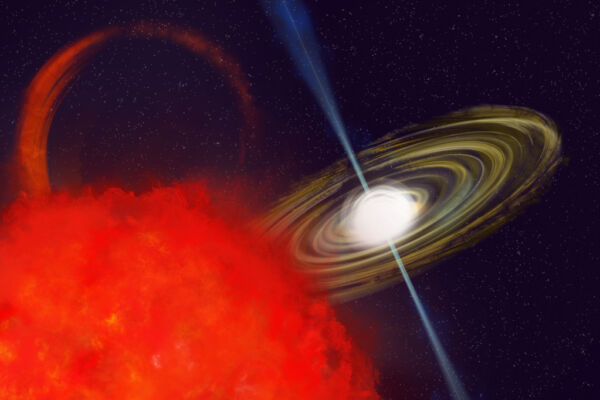Astronomers have discovered a rare celestial object named “long-period transient” (LPT), which has the highest level of polarization among known LPTs and is the only one observed to undergo self-accelerated rotation. This phenomenon, unprecedented in similar celestial bodies, has been dubbed by astronomers as the “unicorn” of the astronomical world.
The National Radio Astronomy Observatory (NRAO) in the United States announced in a press release that astronomers using some of the world’s most advanced radio telescopes, including the Green Bank Observatory in West Virginia, have identified this LPT named CHIME J1634+44.
The Green Bank Observatory is part of the NRAO and both are primary facilities funded by the National Science Foundation (NSF).
LPTs are celestial objects recently discovered by astronomers that emit radio pulses with extremely long rotation periods, sometimes lasting from minutes to hours. The unique characteristics of CHIME J1634+44, such as mysterious shortening of its rotation period and abnormal polarization, challenge current scientific knowledge and raise questions about how these celestial bodies operate.
Lead researcher at the Green Bank Observatory, Fengqiu Adam Dong, referred to CHIME J1634+44 as a “unicorn” among other LPTs due to its distinct features.
Astronomers first discovered LPTs in 2022. These celestial bodies emit radio pulses every few minutes or hours. Despite hundreds of observations of CHIME J1634+44 from multiple observatories, researchers are still uncertain about the exact timing of its repeated radio pulse emissions.
Dong explained that CHIME J1634+44 appears to emit radio pulses every 14 minutes, with a noticeable secondary period of 70 minutes, which is exactly five times the primary period. They believe both periods are genuine and indicate a system where something is orbiting around a neutron star.
Typically, celestial bodies like neutron stars or white dwarfs slow down their rotation speeds over time as they lose energy, leading to longer rotation periods. However, CHIME J1634+44’s period is shortening, indicating an acceleration in rotation rather than deceleration.
Researchers suggest that CHIME J1634+44 may actually consist of two stars in very close proximity orbiting each other. If the orbit of this binary system is contracting (potentially due to the emission of gravitational waves or interactions causing energy loss), this would result in its period appearing shorter. Similar orbit contraction phenomena have been observed in pairs of closely orbiting white dwarfs.
The radio pulses emitted by CHIME J1634+44 are 100% circularly polarized, meaning radio waves are twisted into perfect spiral shapes during propagation – a highly rare occurrence.
Astronomers have not yet observed this situation where known neutron stars or white dwarfs exhibit this level of circular polarization with each radio pulse emission, indicating a distinct mechanism for generating these radio waves compared to other known celestial bodies.
Dong further added, “The discovery of CHIME J1634+44 expands the known number of LPTs and challenges existing neutron star and white dwarf models, suggesting that there may be more similar celestial bodies waiting to be discovered.”
This finding opens up new pathways in radio astronomy, bringing astronomers closer to unraveling the mysteries of these enigmatic cosmic beacons.
The research findings were published on July 17 in The Astrophysical Journal Letters.

